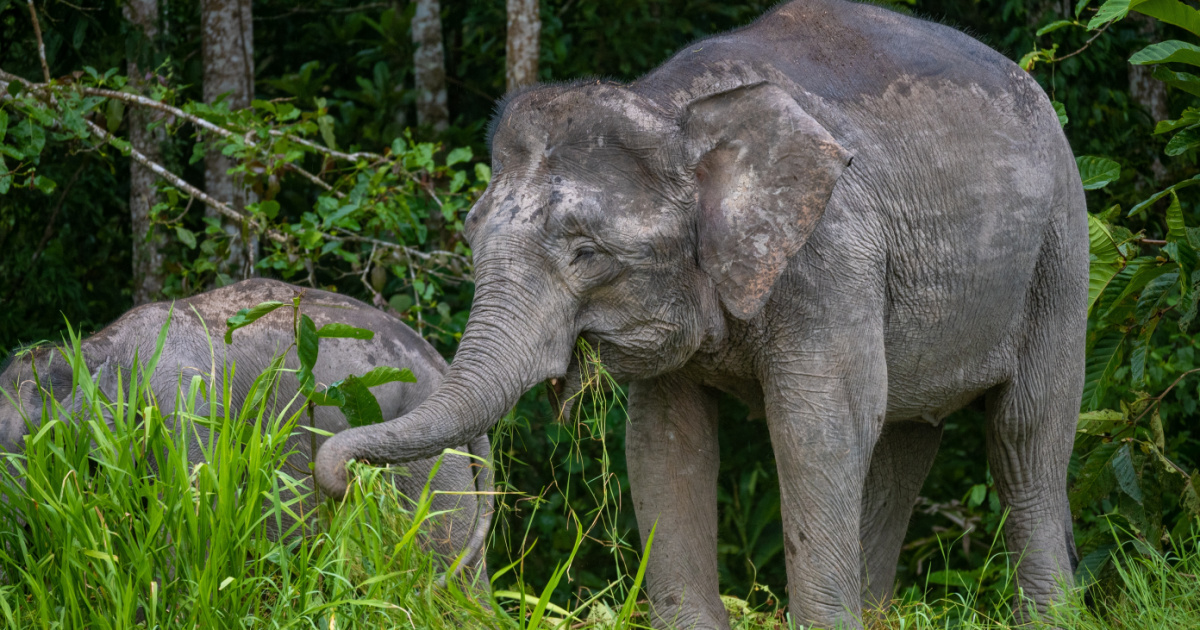
It can feel as if we’re hearing every day about another animal that has become endangered – and almost always because of the negative influence humans have had on the earth and the other beings living on it.
Now, it’s the world’s smallest elephant.
And everyone loves elephants.
Bornean elephants are officially listed as endangered by the International Union for the Conservation of Nature (IUCN), due to habitat destruction, conflict with humans, and debate over their status as a subspecies.
They are small compared to other Asian elephants, standing around 8.2-9.8 feet tall. Some scientists believe they were isolated from their mainland relatives around 300,000 years ago, while others think it was likely much more recent, maybe 11,400-18,300 years ago.
This debate about their classification has made them harder to protect, and now there are only about 1,000 Bornean elephants left. Their population continues to decline following clearance of their forests for logging and palm oil plantations.
Recently, this has also led to an increase in contact and conflict with humans.
New research conducted by a team at the Natural History Museum in London has helped support this classification as an official subspecies and get them placed on the list of critically endangered animals.
They accomplished this by comparing over 120 Asian elephant skulls, revealing key differences in Bornean elephants compared to their larger relatives.
Their heads are wider, and the gap where the trunk would be is narrower, too.
Genetic studies also show clear differences between the two, and professor Adrian Lister hopes this will help save them in the wild.
“Conserving biodiversity means conserving natural variation at all levels – not only different species but also unique populations within species.”
Dr. Cheryl Cheah, a conservation ecologist, agrees it’s a big step.
“The inclusion of Bornean elephants on the Red List is pivotal in galvanizing conservation efforts and directing resources to areas of utmost importance.”
Lister adds that protecting the Bornean elephant could have widespread effects.
“Elephants are a keystone species, playing a crucial role in maintaining the health of rainforests. By conserving these elephants, we’ll be protecting many other species and the broader ecosystem.”
Here’s hoping.
I’ve got my fingers crossed for these cute little guys.
Thought that was fascinating? Here’s another story you might like: Why You’ll Never See A Great White Shark In An Aquarium